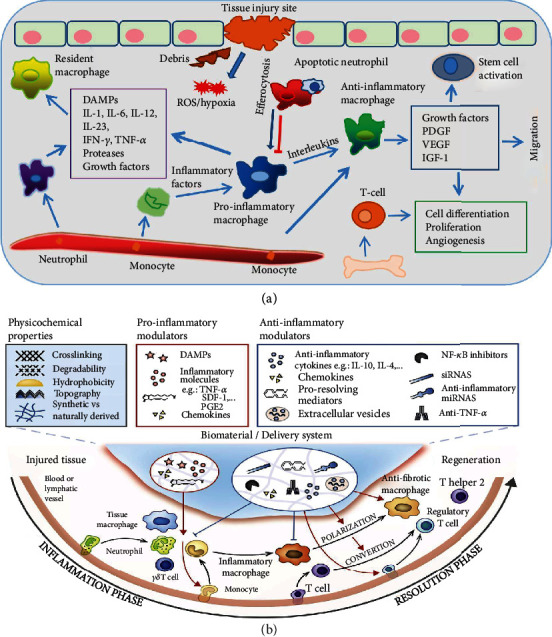Figure 1.

(a) Schematic illustration of the tissue microenvironment at the site of injury. Tissue injury is sensed by the resident macrophages via the released DAMPs and neutrophils that are primary infiltrating cells recruited to the damage site, which in turn recruit monocytes and macrophages. The inflammatory microenvironment is formed by the released inflammatory cytokines, growth factors, and proteases in the earlier stage. It is then shifted to the anti-inflammatory microenvironment that exploits tissue repair and homeostasis in the later stage. (b) Illustrating how the physiochemical properties of biomaterials regulate the tissue immune system. Biomaterials aid in the regulation of inflammatory cells towards the regeneration/repair phase. They are involved in the polarization of M1 inflammatory macrophages to M2 anti-inflammatory/profibrotic/proregenerative macrophages, which is a critical process for tissue regeneration. They also play a crucial role in converting T-cells into T-regulatory cells. Reprinted with permission from [21] Copyright © Elsevier 2017.
